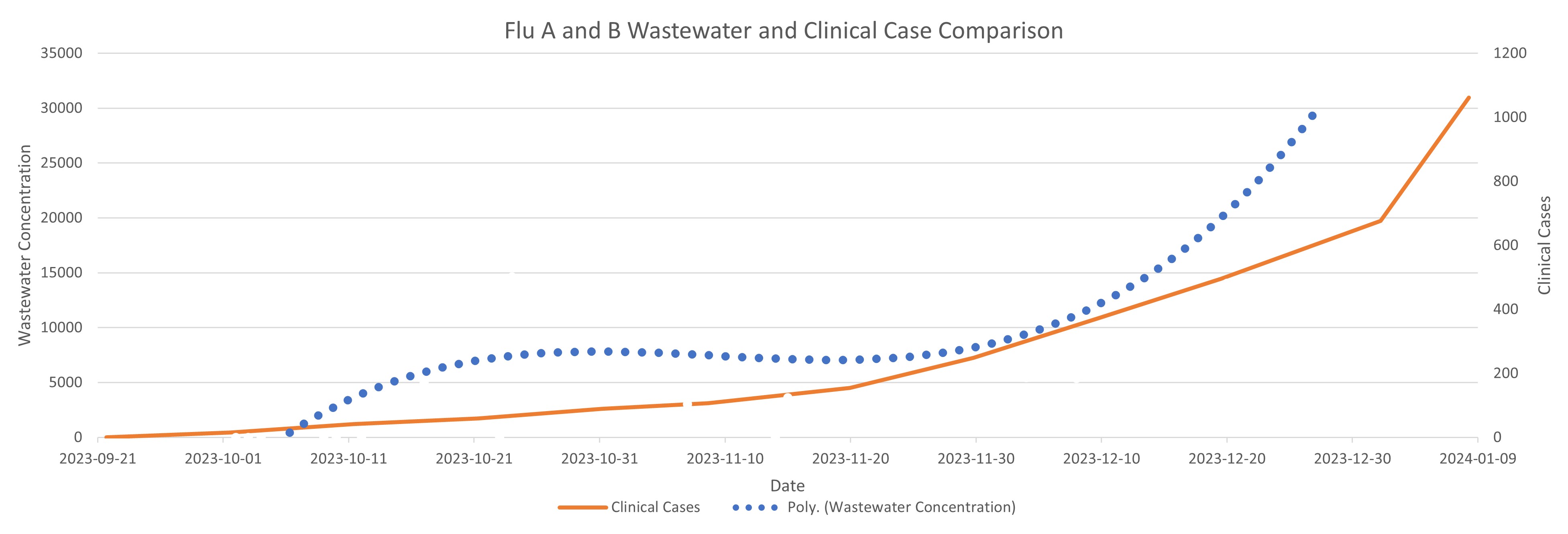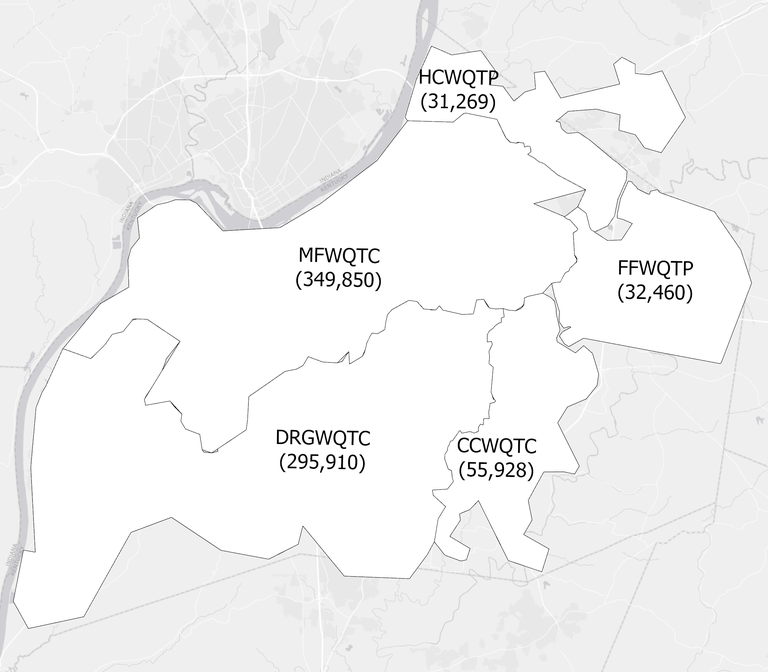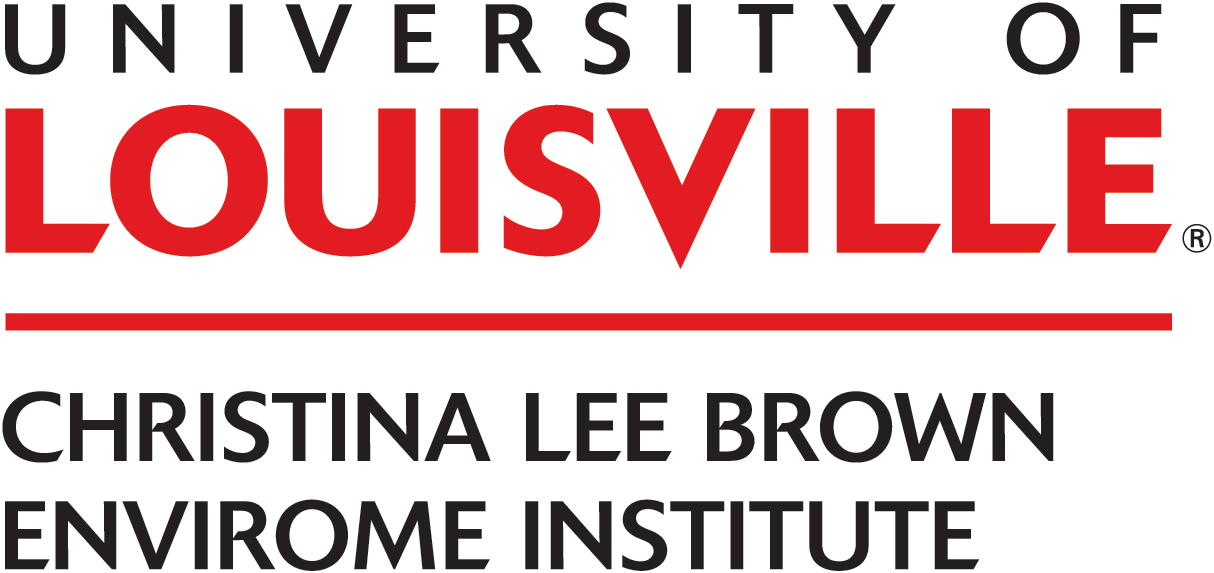Dashboard
Wastewater Monitoring Results
Since June 2020 Louisville’s Metropolitan Sewer District (MSD) and Louisville Metro Public Health and Wellness (LMPHW) have partnered with researchers from the University of Louisville's Envirome Institute to learn how sewage may indicate community health risk. We have collected over 3,000 samples to track more than 40 different diseases. We also contribute to the CDC's COVID Data Tracker.
SARS-CoV-2 Wastewater Levels & Hospital Admissions (05/13/2024)
In the chart below, we show overall SARS levels across Louisville. For this graph, wastewater was collected on 05/08/2024. See more CDC hospital metrics.

Flu Wastewater Levels

Wastewater samples are collected weekly at Louisville's Morris Foreman Water Quality Treatment Center. Source: Verily WastewaterSCAN.
Wastewater as an Early Warning System
2023 Flu Season Example
The chart below compares clinical cases (orange line) and wastewater concentrations (blue line) for Flu A and B. The trend lines are similar, with wastewater leading clinical cases by about 3 weeks.

Louisville Sewersheds
We sample from 5 water quality treatment plants weekly. The first graph above shows the average SARS-CoV-2 virus concentration from all 5 treatment centers.

Contact
For more information, send us an email!
